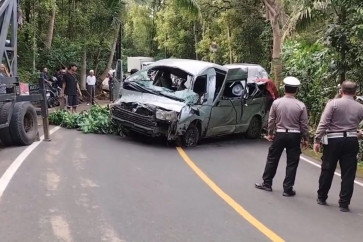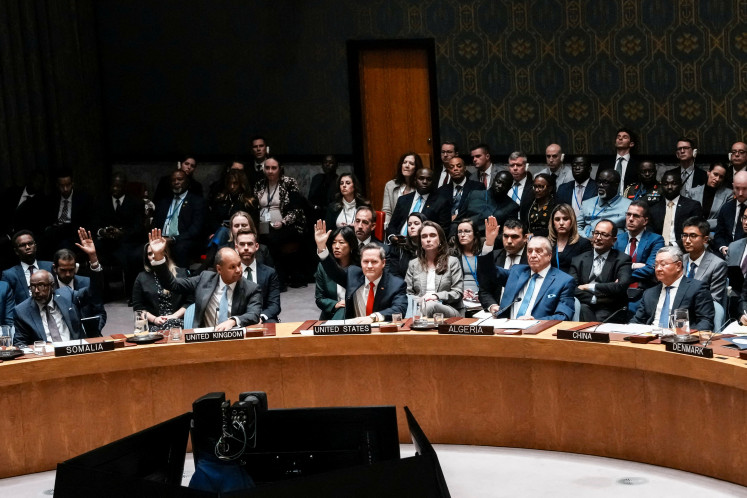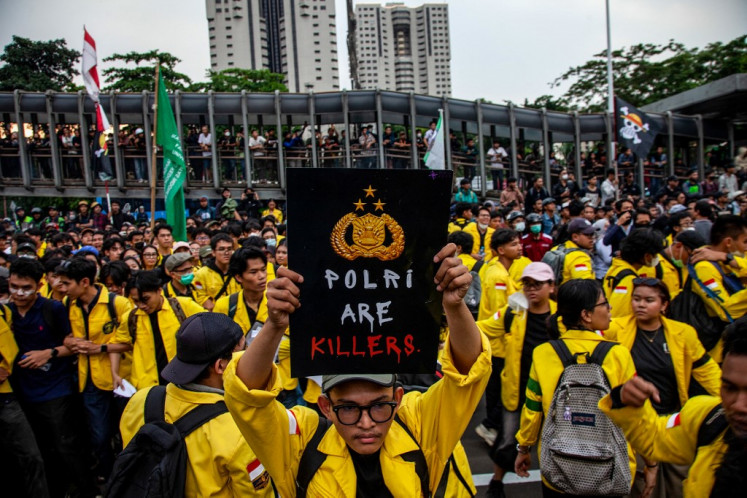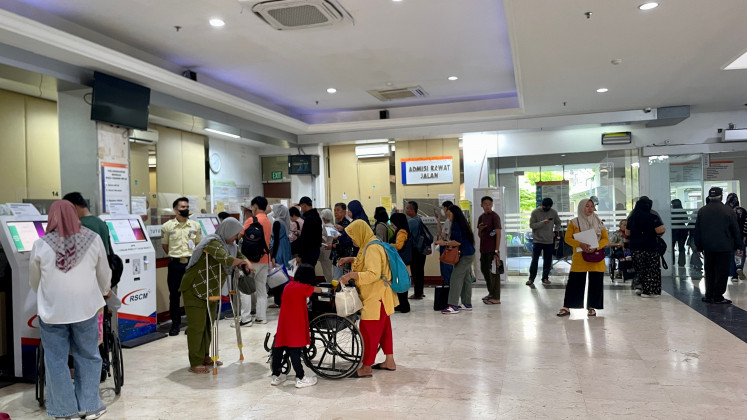Popular Reads
Top Results
Can't find what you're looking for?
View all search resultsPopular Reads
Top Results
Can't find what you're looking for?
View all search resultsBarriers to renewable energy development
Energy Law has been promulgated and has set the direction of our future energy policies
Change text size
Gift Premium Articles
to Anyone
E
nergy Law has been promulgated and has set the direction of our future energy policies. The government is committed to increasing our primary energy portfolio from the current 4.5 percent of energy used from renewable resources and low carbon sources, to over 17 percent by 2025.
As of last year a grid of more than 5 Megawatts (MW) connecting 86 MW of renewable resource energy was commissioned and is currently being built.
While micro-hydro energy is still by far the largest renewable resource, the government is now actively exploring the potential of utilizing wind energy. A new wind map survey, based on satellite imagery of Indonesia was recently commissioned.
We do not expect that we can build wind parks like those in Europe, due to lower wind patterns overall, there are still good prospects for a significant contribution, with lower wind-speed renewable energy being used for rural electricity projects.
Of the 70,000 Indonesian villages, over 91 percent have access to electricity either from the grid or stand alone sources.
In spite of this, mainly due to the geographical difficulties of an archipelagic nation, only 64 percent of households have access to electricity.
By 2025 the government has targeted that 95 percent of all households will have access to electricity. This means that on average we need to provide roughly 1.3 million new connections per year. This requires a serious scale-up program.
To move toward a lower carbon transport sector, the government is in the process of scaling up the supply chain and infrastructure for the production, distribution and use of biofuels.
Bio-ethanol will be produced to be used as a substitute for gasoline, biodiesel (Jatropha) as a diesel fuel substitute and other bio and vegetables oils as substitutes for bunker, kerosene etc.
Biofuel development aims to replace 10 percent of diesel fuel consumption with biodiesel by as soon as 2010. This would amount to the production of over 2.4 million kiloliters of biodiesel.
By 2025, over 20 percent of diesel fuel will be comprised of biodiesel. Taking into account overall growth, this would amount to a production of 10.2 million kiloliters.
A similar rapid growth curve is expected for bio-ethanol, with a production of 1.45 million kiloliters by 2010, constituting 5 percent of gasoline consumption by the end of 2010.
By 2025 this should have increased to 6.28 million kiloliters, or 15 percent of gasoline consumption in that year.
With this amount of production, the main issue would be not only related to land use – as valuable agricultural land being used for the production of fuel for transport will increase the market price for food products – but also to the disappearance of forests due to palm oil production.
Recently much stricter conditions on forest utilization were announced, and forestry maps
have also been redrawn, including previously unlicensed forest areas.
This has resulted in a new barrier to renewable energy development, particularly geothermal energy.
Traditional approaches to using market mechanisms to stimulate greater investment in renewable energy for power, such as feed-in tariffs, and/or capital subsidies, may not be effective. We only have one state-owned company (PLN) responsible for the generation, transmission and distribution of electricity.
However, the tariff for customers is subsidized and set below the market. Thus PLN’s production cost is already more than double the tariffs they can collect.
Moreover, due to the current subsidy structure, PLN, from a banking point of view is a loss making enterprise.
Banks therefore require letters of confidence from the government assuring them the government
will pay the off-taker in time and honor their obligations to the private sector investing in renewable energy.
The new administration has to further refine the strategy for renewable energy development, particularly with respect to energy-food conflict, forest utilization, take or pay arrangements, pricing and other characteristics in which renewable energy differs from traditional fossil fuels.
The writer is director for energy, mineral resources and mining at the National Development
Planning Agency (Bappenas).
This is a personal opinion.










